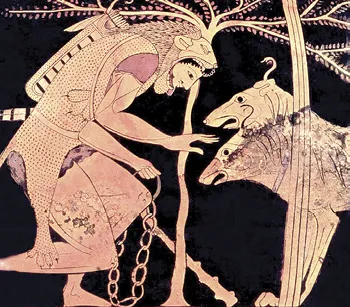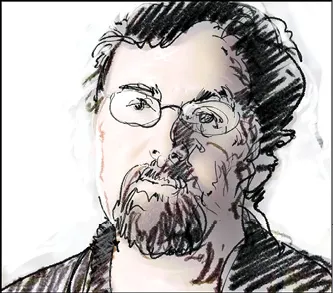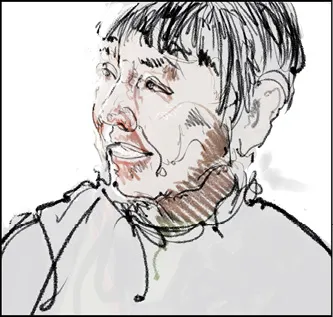![]()
Part1
Story Structure (the Plot)
![]()
Plot: The Structure
What Is a Dramatic Story?
Every day we tell each other stories, but these are not the dramatic stories we see in the movies or encounter in interactive games. Dramatic stories are more than just what is happening… they are about why things are happening and how it affects the viewer.
The dictionary definition of story is a sequence of events. Dramatic stories are still a sequence of events, but the fundamental difference is that they are a sequence of connected events. Many years ago, E. M. Forster (Figure 1.1) indicated that a story can be about “the king died and then the queen died” but a dramatic story is “the king died and then the queen died of grief.”1 The emphasis moves from what happened to why it happened.
Figure 1.1
E. M. Forster, novelist.
Stories connect audiences to what individuals think, and what cultures value. The important questions in a story are: What do people want? Why do they want it? How do they go about getting it? What stops them? What are the consequences?2 These are fundamental. Dramatic stories are about a main character, who goes after something but it gets increasingly difficult (conflict)… and by the end, they are changed, and see the world differently.
The Why underscores how we use a story to understand life; why things work the way they do. Stories aid human beings in their search for meaning; to make sense of why we are alive. They give us a perspective on priorities in our lives. For generations, cultures have proposed answers to these questions through myths (Figure 1.2): Greek plays, Shakespearean plays, Chinese proverbs, folk tales, and interpreted dreams.3 Today, we get this information through novels, movies, animation, and interactive games. In dramatic stories, we see a main character that (1) has a problem which can’t be avoided, (2) is faced with difficult choices, and (3) which has serious consequences if they are not successful.
Figure 1.2
Ancient mythology.
Today, audiences have even higher expectations from dramatic stories. Joseph Campbell, author of the Hero’s Journey story structure, emphasizes that audiences have evolved from searching for clues on the meaning of life to additionally seeking an “experience of being alive” in stories.4 The key is to engage audiences emotionally, by linking the external action to the internal emotions of the characters. Joe Ranft emphasizes that connecting a viewer’s internal emotions with the main character enhances their ability to identify with the story (Figure 1.3).
Figure 1.3
Joe Ranft, Head of Story, Pixar, 1990–2005.
Linda Seger (Figure 1.4) asks the question: What is a story? She indicates that it sounds like an obvious question but believes that many films, animations, and games are released every year where there is not a story… but episodes. Episodes are defined as the daily events that happen in our lives. The difference is that episodes are how we live most of our lives; we get up, go to work, see friends, go to lunch, but none of these events are intrinsically linked to each other.5
Figure 1.4
Linda Seger, story consultant and author of Making a Good Script Great, Samuel French Trade, 1987.
All dramatic stories have a similar set of elements—connected actions, with conflict that intensifies, which force difficult choices with consequences. Along the way the ever-increasing conflict results in a crisis that leads to a climax, with a surprise along the way that the audience didn’t anticipate. This leads to a resolution (gives meaning to the story) and in the end the character is changed. These are the universal components of a story today.
Plot… What Is It?
What is Plot? Plot is the sequential arrangement of the story elements (i.e., character, setting, and them...




